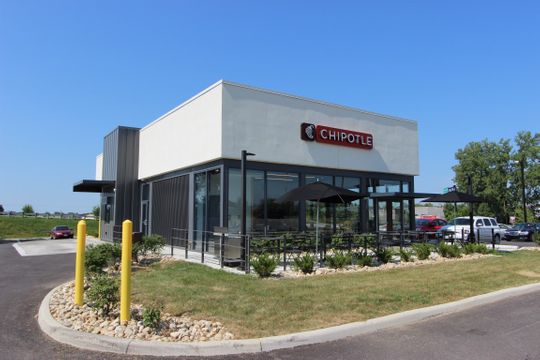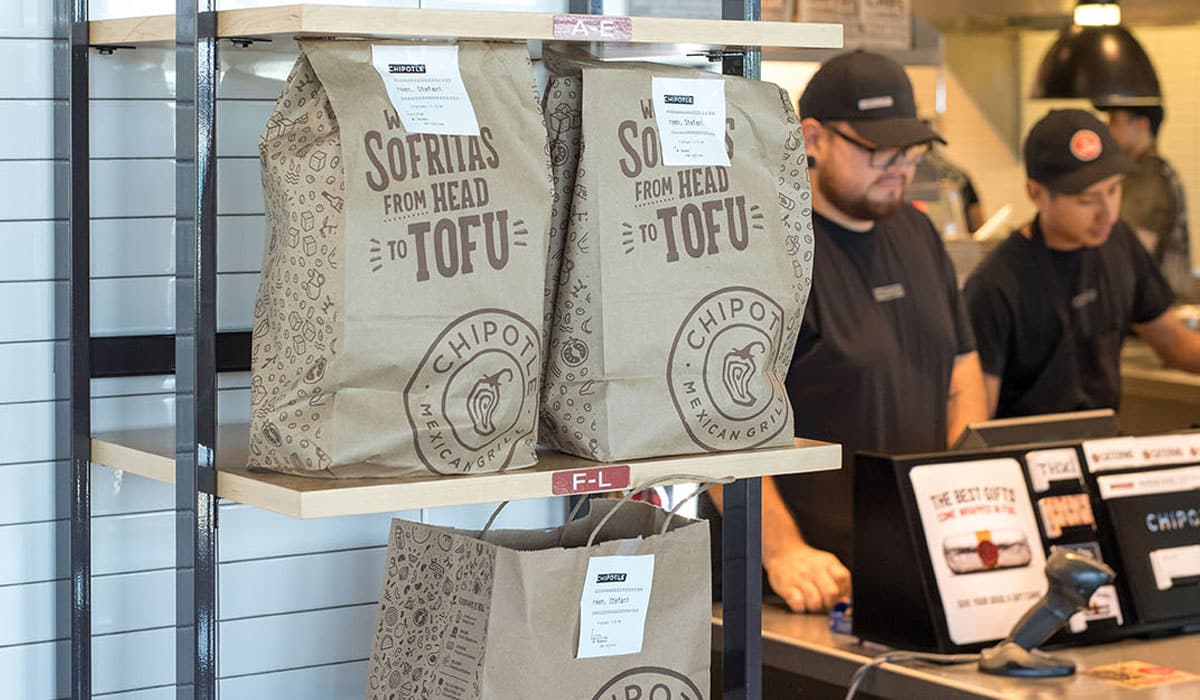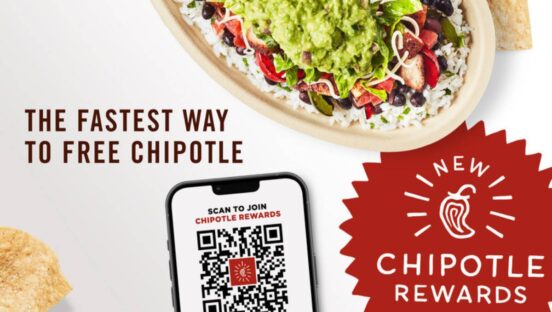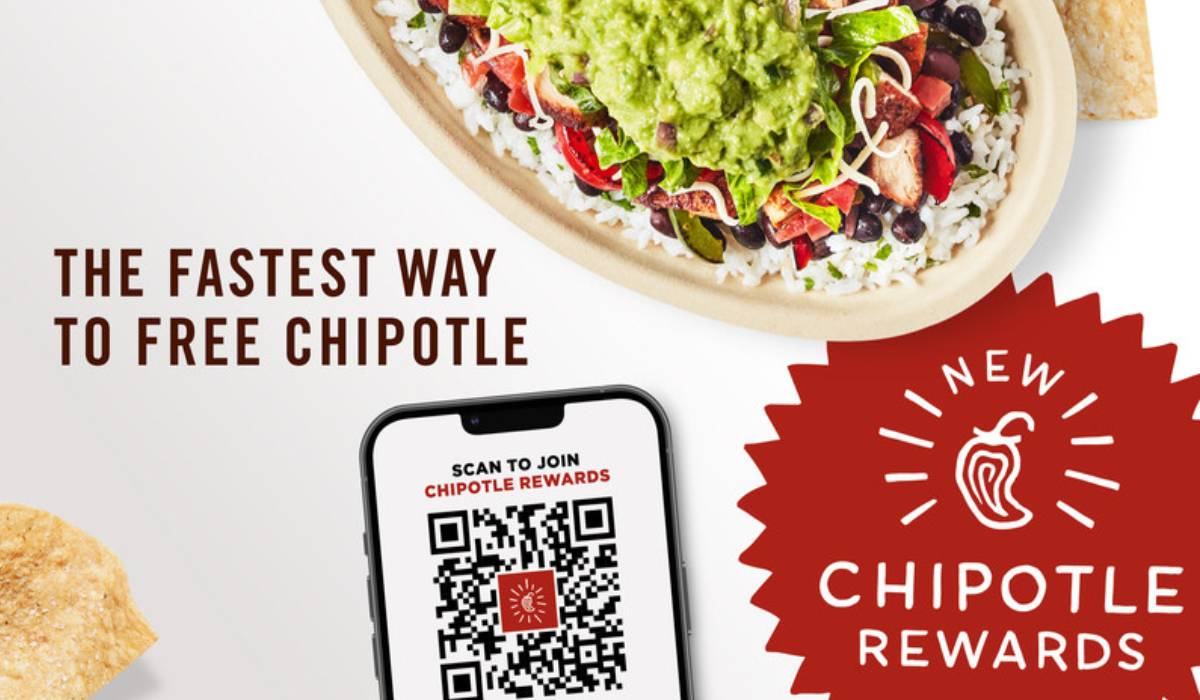Chipotle CEO Brian Niccol shared a real-time case of a COVID-19 narrative in action.
At the beginning of the pandemic, the fast casual touted eight million people in its loyalty base. That was no small accomplishment on its own given the platform was a year old. Even more so when you consider its last attempt—the now-infamous Chiptopia from July 2016—was better known for the $20 million it cost Chipotle in catering packages than the loyalty it inspired.
Since COVID-19’s March introduction, however, the 90-day active number climbed to 17 million. For perspective, Starbucks Rewards boasted 19.3 million 90-day active members in Q4, a year-over-year lift of 10 percent.
But Chipotle had 2,710 domestic restaurants as of September 30. Starbucks had 15,337.
“I think this was something that would have happened anyway. It just sped it way up,” Niccol said of COVID, and how, in this case, it compressed innovation instead of disrupting it—a widely held quick-service reality of late.
And this particular anecdote just grazes the digital iceberg. Speaking Tuesday at the Morgan Stanley Virtual Global Consumer & Retail Conference, Niccol and CFO Jack Hartung touched on a wide array of topics. Yet whether it was growth, loyalty or menu innovation, technology served as the supercharged undercurrent.
All those fast-food brands building drive-thru locations without dining rooms? Chipotle is on the verge of becoming one, too. It’s plotting a “Chipotlane”-only venue in Kansas City, Niccol said. While not stunning and something the brand hinted at before, it speaks to a larger plan.
Kansas City is an older market for Chipotle. Previously, you might even have called it a bursting one. But digital gains allowed the brand to rethink trade areas.
In November, Chipotle debuted a digital-only store just outside the gate of the military academy in Highland Falls, New York. Called “Chipotle Digital Kitchen,” it offers pickup and delivery without a dining room. It’s not a ghost kitchen, however. Customers can walk in and order/pickup. It’s not a hub for off-premises fulfillment, either, as much as it’s a reimagined model to get food to guests. The military academy nearby created a heavy delivery, order-ahead, and pickup proposition. So Chipotle built a restaurant that fit the need rather than try to wrap that consumer around its real estate.
“That’s a unique trade area that if we didn’t have this Chipotle execution, we probably wouldn’t be in that trade area frankly,” Niccol said.
The same is true of the Chipotlane-only KC test. And it opens the conversation for Chipotle to infill mature markets with digital-only locations to extract more dollars that otherwise “we would say we’re going to have to wait before we’re ready to put in another Chipotle,” Niccol said.
“So, we’re experimenting on all fronts,” he added. “And that’s why I get really excited about the flexibility and the assets that we have as well as the flexibility or the resiliency we have in our business to be able to pivot to a digital proposition or an on-site proposition.”

Niccol also suggested an intriguing long-term initiative. While U.S. comps and new-unit development remain Chipotle’s A1 target, international expansion is stirring again. “As you look out over the next three to five years, I don’t see any reason why we can’t start having success outside the U.S.,” Niccol said. “And so, we’re going to start the process of using that … disciplined approach to looking at how we can build-out the markets where we already have our foot in the door and start evaluating new markets where we don’t have our foot into those markets yet. So the health of the U.S. business compounded by the fact that now we have a really robust digital business, I think just gives us a greater chance of success when we go outside the U.S.”
Today, Chipotle has eight locations in the U.K. and 23 in Canada. There was a time, though, when Chipotle gave expansion in France (2012 to start) and German (August 2013 was the first) a shot. One of the reported setbacks at the time was press reviewers calling the food overpriced for their area. But a lot has changed in the past decade. Could European growth open back up? Niccol didn’t divulge further details.
Stateside, Hartung said, if Chipotle can capture all the margin opportunity it has, say by the second half of 2021, “we know that we have the ability to build to the 5,000 or 6,000 restaurants at our algorithm.”
Chipotle has previously said—and reiterated Tuesday—it expects to get back to the mid-200s growth pace on an annual basis. That’s nearly 100 more projected openings per calendar than Chipotle planned for 2021 before the crisis hit. From 2014 to 2015, Chipotle grew by a net of 216 locations. The next year, it was 227. It then slowed to 173, 83, and 130 as the brand worked its way back from 2015’s food-safety woes.
An important part of that potential is the store model itself. Chipotle committed 60–70 percent of its future expansion to Chipotlanes. “And the reason is because the economics are phenomenal,” Niccol said.
If you consider where Chipotle is today (roughly 2,700 locations) and the fact the bulk of new openings will feature the outlet, there are going to be a lot of Chipotlanes along that road to 6,000. For a round figure, 70 percent of 3,000 is 2,100.
Margin wise, these restaurants, to date, welcome 60 percent of their sales through digital, Hartung said. Importantly, two-thirds of that is order-ahead. With these locations, the more profitable digital avenue lifts while the less profitable one (delivery) shrinks. “And so, every single metric that we look at with Chipotlane is better,” Hartung said. “It’s better in terms of sales, better in terms of margin, better in terms of order ahead. It’s greater convenience and it skews toward that higher-margin transaction”
Across the current system, Chipotle’s digital breakdown is nearly even between delivery and order ahead. And with delivery specifically, it’s 65 percent marketplace and 35 percent in-app.
There are about 150 Chipotlanes nationwide. At the end of Q3, there were 128, including five conversions. The digital gap versus non-Chipotlane units was 10 percent (thanks to more pickup and order-ahead transactions), and the 17 counted in Chipotle’s comps base appreciated sales 10 percent higher. More recent openings were as much as 25 percent above.
To Niccol’s point, Chipotlanes offer a $200,000 jump in added volume right out of the gate, which is a friendly return for a $75,000–$100,000 investment.
Digital underscored menu innovation as well for the brand. With the scale Chipotle now has in that corner of its business, it can try digital-only menu launches.
For instance, when quesadillas are ordered on the front line today (not on the menu, but people still order them anyway), it takes a minute and a half to 2 minutes to come out. That’s a significantly slow product make for an assembly line approach.

But Chipotle enjoys digitized second-make lines in all of its units dedicated to off-premises orders. And these are pushing $1 million average-unit volumes just on their own (Chipotle’s overall AUVs are about $2.2 million). Digital sales in Q3 rose 202 percent, year-over-year, to $776 million, or 49 percent of sales. So it’s basically splitting in a COVID arena. Digital mixed closer to 20 percent pre-virus. Since sales troughed in late March, Chipotle retained 80–85 percent of digital sales gains while recovering 50–55 percent in-store sales.
Cowen research analyst Andrew Charles said this week Chipotle’s digital gains are not going away even if the pandemic does, as consumers continue seek “frictionless and convenient digital-ordering.” Charles added he expects Chipotle’s comps to gain 12.5 percent in fiscal 2021.
With digital-only menu items, though, you’re talking about an operation in the back for Chipotle producing $200,000 more per unit than a Waffle House. “You’re starting to say, well, geez that digital business, most restaurant companies would kill to just have that size digital business as their whole concept, right?” Niccol said.
“So we do think that presents the opportunity to do some unique menu innovation just in digital.”
The process really began with Lifestyle Bowls in January 2019. The difference here, however, in regards to the quesadilla, is that Lifestyle Bowls used all the same ingredients and cooking platforms. They were simply curated options to access online.
Quesadillas are the first product test where Chipotle is using a unique cooking platform to provide a unique menu experience, Niccol said. The pilot stores in Cleveland and Indianapolis have new oven equipment.
“The answer is, I think we’re going to be able to do menu innovation now in a digital world, and we’ll be able to do menu innovation in a, call it an in-store world,” Niccol said. “And that’s why we have to use the stage-gate process, though, to make sure that we’ve got the discipline around understanding the consequences of whatever we should decide to do before we actually go do it across all 3,000 restaurants.”
Niccol added the quesadilla proved an ideal digital product due to its portability and ability to hold over time.
Returning to rewards, Niccol said it probably won’t be until the back half of 2021 where the real data effect shows. So far, Chipotle has gleaned a deeper understanding of its medium user and gone deeper with its heaviest. “The thing that I’m really excited about is we’re definitely seeing the ability to influence purchase frequency with all those groups,” he said, including the light and new users that flooded in during COVID. “And we’re also seeing a higher level of engagement. We’re also seeing a more commitment to the idea of trusting the brand, believing in the brand purpose.”
Chipotle is doing the classic things, like dangling incentives to spark visits and personalizing offers based on history. The company calls these “journeys,” or a way to drive behavior from data. Yet again, it’s early stages.
“A lot of these cohorts, we have much more significant scale than we had. And we’re really learning a lot to understand what influences their behavior accordingly and also making sure we’ve got people in the right cohorts. So I would say its experimentation,” Niccol said. “It’s definitely a tool we’re using to drive same-store sales growth right now, but I just think it’s going to continue to build on itself and become even much more effective as a comp tool as you get into 2021, 2022 and beyond.







